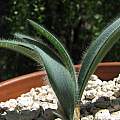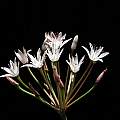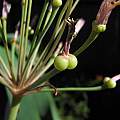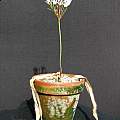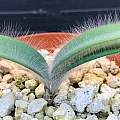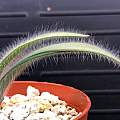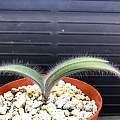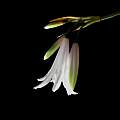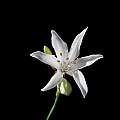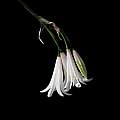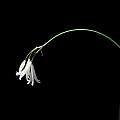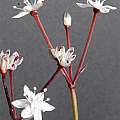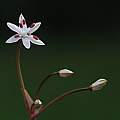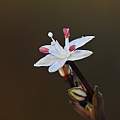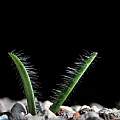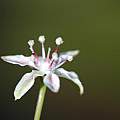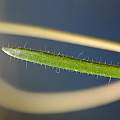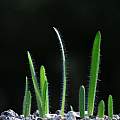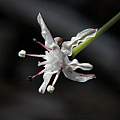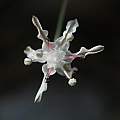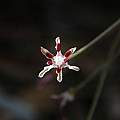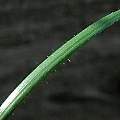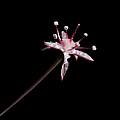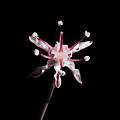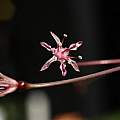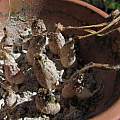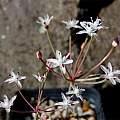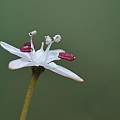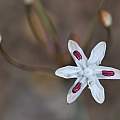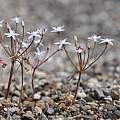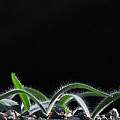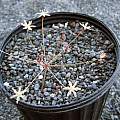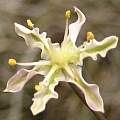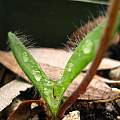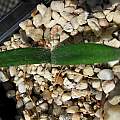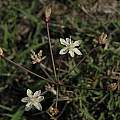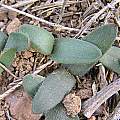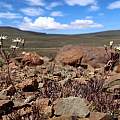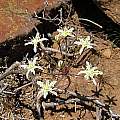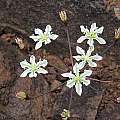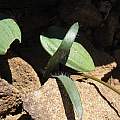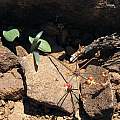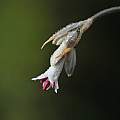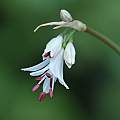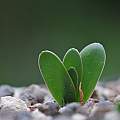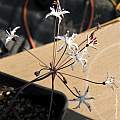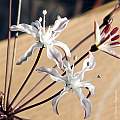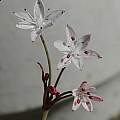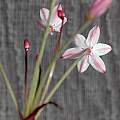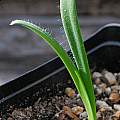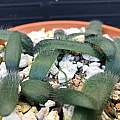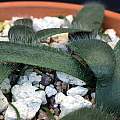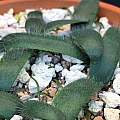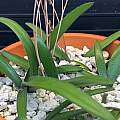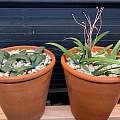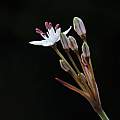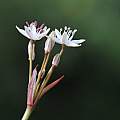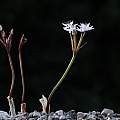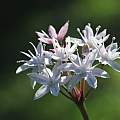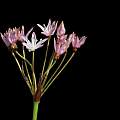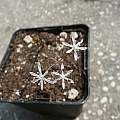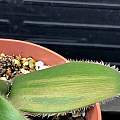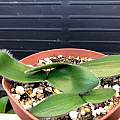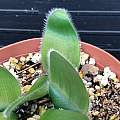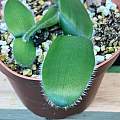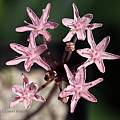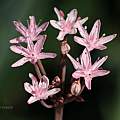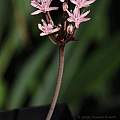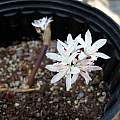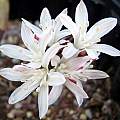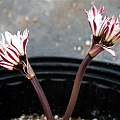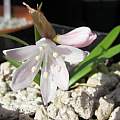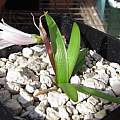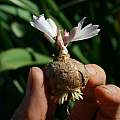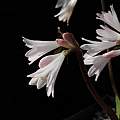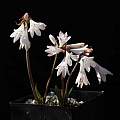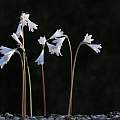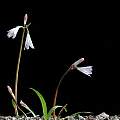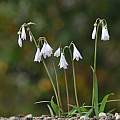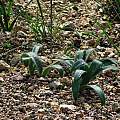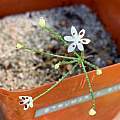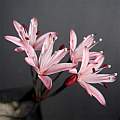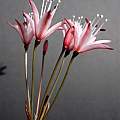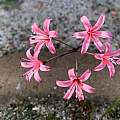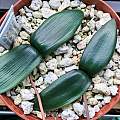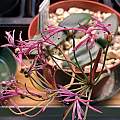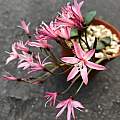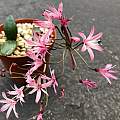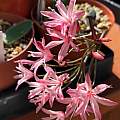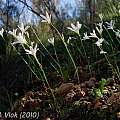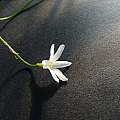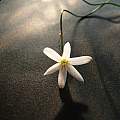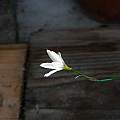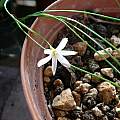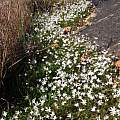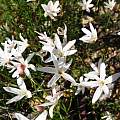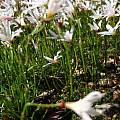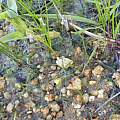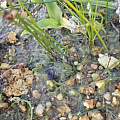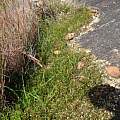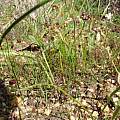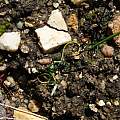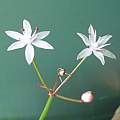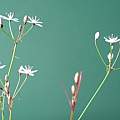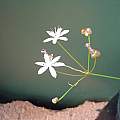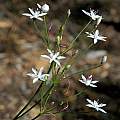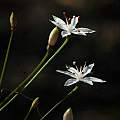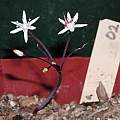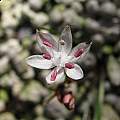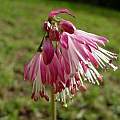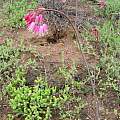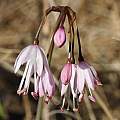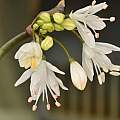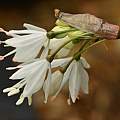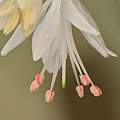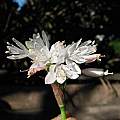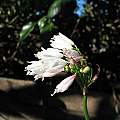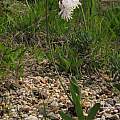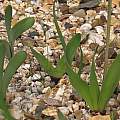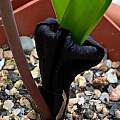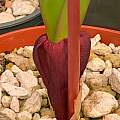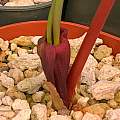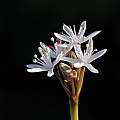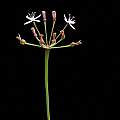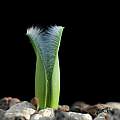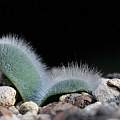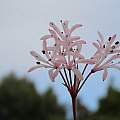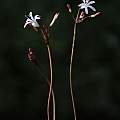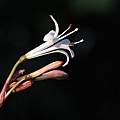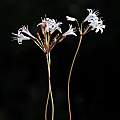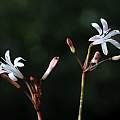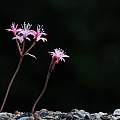Strumaria is a genus of 24 species from southern Africa in the Amaryllidaceae family found in Namibia, South Africa, and Lesotho. Most of them are from the winter rainfall region, but a few extend into the summer rainfall area. Eleven of the species are rare and five endangered. These are often small plants, capable of self fertilization and this may explain their tiny locality ranges. Most of the species grow in winter and are dormant in summer and all will grow in well drained sandy soil in sun. Most flower in autumn, usually before their leaves and seeds are produced a few weeks after flowering. Seeds are recalcitrant; they cannot stop their germination process and germinate immediately after they are released from the capsule, so they fall to the ground and either shrivel up and die if there is no rain, or germinate if there is moisture. Usually they produce a root first, then form a small bulb, and then finally a stem and leaves. The plants grow through the winter and early spring, and go dormant again when the temperature rises and the rains stop. This is a good species to grow in pots and relatively quick to grow from seed in contrast to some of the larger South African Amaryllids. In a pot they probably like a little moisture in summer to prevent their fleshy roots from drying out. For more information see D.A. Snijman's Systematics of Hessea, Strumaria and Carpolyza and Graham Duncan's The Amaryllidaceae of Southern Africa
Strumaria aestivalis Snijman is endemic to one locality in the foothills northwest of Loeriesfontein. It is summer-flowering (January in habitat) and responds rapidly to scattered thunder-showers. Flowers are produced prior to the appearance of leaves. It is most similar to Strumaria pubescens in having extremely pubescent leaves. However, the flowers in this species are more spreading. Height range: 8-28 cm. Photos #1-4 were taken by Nhu Nguyen. Photo #5 was taken by Uluwehi Knecht.
Photos from Rimmer de Vries.
Strumaria barbarae Oberm. is native to the Western Cape Province of South Africa and north into southwestern Namibia. It is extremely sensitive to moisture and the leaves tend to rot very easily with excess moisture. Height: 20 cm. The photos below are of plants grown by Uluwehi Knecht. The photos were taken by Nhu Nguyen.
Strumaria chaplinii (W.F.Barker) Snijman is found on granite outcrops in the southwest Cape. It flowers March-April before the leaves. Growing to 20 cm, it has two prostrate elliptical to oblong leaves that are covered with long, soft, erect hairs. The flowers are star-shaped, white with red or green midribs. The first photo by Hans Joschko. The other photos from Bert Zaalberg.
Strumaria discifera Marloth ex Snijman is a species of the northwest Cape and the Roggeveld. It has hairy long, narrow lanceolate leaves usually dry at flowering and star-shaped glistening white flowers with channeled tepals with an olive-green to pink median dorsal stripe on each tepal. Height: to 20 cm tall. It has a bulbiform to discoid swelling at the base of the style. Flowering is in the fall. There are two subspecies.
Strumaria discifera ssp. bulbifera Snijman is a clumping subspecies found on slopes and hollows of low exposed dolerite ridges on the Bokkeveld Plateau. It has a disc like swelling around the style with a frilly rim. The first four photos by Leo Martin added to the Mystery Bulbs page received as another genus, but tentatively identified as this subspecies are pictured below. The last photo of the leaves is from Bert Zaalberg.
Photos below from Mary Sue Ittner taken December 2011.
The photos below were taken by Nhu Nguyen of a reddish form showing the swelling around the stigma, as well as mature bulbs in a small terracotta pot.
Strumaria discifera ssp. discifera is found on clay flats in the Northwest Cape and the Roggeveld. It is usually found in scattered populations of solitary bulbs. The swelling around the style is smooth. The first photo from Hans Joschko. The other photos were taken by Bert Zaalberg.
Strumaria gemmata Ker Gawl. is the only species in the genus with pale lemon yellow flowers. Height: to 30 cm. It is confined to semi-arid regions in the southern, south-eastern and eastern regions of the Cape Province. It has two leaves that are usually dry at flowering, recurved to prostrate, softly hairy or rarely smooth. First photo by Diana Chapman. The second photo is a close-up of a single flower, while the third is of the furry foliage - both from Uluwehi Knecht. The last photo is from Hans Joschko.
The first three photos were taken by Cameron McMaster in the Overberg. The last photo was taken by Bert Zaalberg in the Eastern Cape.
Photos by Cameron McMaster taken at Andriesberg showing flowers, leaves and fruit.
Strumaria hardyana D.Müll.-Doblies & U.Müll.-Doblies occurs in Namibia where it grows in sandy soil along seasonal watercourses and in crevices and depressions of black limestone cliffs. It flowers from March to May after rains and the leaves appear after the flowers, but when the plants are in flower. It has a partially aerial bulb neck and strap-shaped, leathery, dark green leaves with blunt, notched tips. The nodding or pendulous white funnel shaped flowers are turned to one side and have exserted white stamens. Height: 8 cm. Photos from Bert Zaalberg.
Strumaria karooica (W.F.Barker) Snijman is from the Roggeveld where it inhabits flat, clayey sites, usually near rocks. It grows to 20 cm high and has two leaves that are dry at flowering. Flowers are star-shaped, pale pink with dark red dorsal midribs on long spreading pedicels. Bloom time is fall. Photos by Diana Chapman and Mary Sue Ittner. The form that Mary Sue grows has suberect leaves even though the ones in the field usually have leaves appressed to the ground. The tepals do not show the undulating edges that Diana's plants have, but do illustrate the deeper pink stripe on the back of the tepals, the darker pink buds and aging flowers, and dark pink to wine red anthers before opening.
Photos from Rimmer de Vries illustrating the two forms. The flat hairy form bloomed in August-Sept in NA late summer and is from Meintjiesplass 1340 m in the S Roggerveld plateau. The upright form bloomed a month later and is only identified as from the Roggerveld plateau (From Telos) The flower scapes were about 10-12” tall in both plants. The remaining scapes shown on the Telos form shown were shorter about 4” and made multiple stems.
Strumaria karoopoortensis (D.Müll.-Doblies & U.Müll.-Doblies) Snijman is distributed both on a hillside in the arid southern Little Karoo and in the northern foothills of the Anysberg, South Africa where it grows on rock crevices in shale. Winter growing and deciduous in summer, it is a short plant in flower to 20 cm with two broad, spreading or recurved strap-shaped leaves appearing after flowering and white star-shaped flowers with deep pink midribs, later turning deep pink. It flowers early in March. Photos from Bert Zaalberg.
Strumaria leipoldtii (L.Bolus) Snijman is found on sandstone rock ledges in loamy soils in the northwest Cape. It grows to 15 cm high and has star-shaped white flowers with green or pink midribs on spreading pedicels that are 10 to 20 mm in diameter. First photo by Alessandro Marinello. Remaining photos by Rimmer de Vries of 5 year old plants, in a 3.75” pot, grown from McMaster seeds, showing fuzzy leaf edges.
Strumaria merxmuelleriana (D.Müll.-Doblies & U.Müll.-Doblies) Snijman is found in seasonal watercourses in sandy, granite derived soils of the succulent karoo of northern Namaqualand near Springbok and Steinkopf, South Africa. It has pink flowers on stout inflorescences in mid-autumn, followed by very broad, glabrous, ovate, prostrate dark-green leaves with recurved margins which give the leaves a bubble-like shape. Height: to about 20 cm. Photos by Uluwehi Knecht.
Strumaria picta W.F.Barker is a large species with open bell-shaped white flowers, backed with a wine red stripe and with a deep red scape. Plant height: to 30 cm high. It is from the Nieuwoudtville district in the western Cape where it is known from only two farms where it inhabits flats or gentle slopes. Photos by Diana Chapman.
Strumaria prolifera Snijman is native to the Northern Cape Province, South Africa. As the name prolifera implies, the bulbs do proliferate, multiplying themselves over the years, much more so than other species in the genus. The leaves are very sensitive to rain and can rot in excess rain of northern California. Height range: 12-20 cm. The photos below were taken by Nhu Nguyen of plants grown by Uluwehi Knecht, showing various aspects of the plant and flower. One of the photos shows a bulb being very eager to bloom even before the root system was well developed.
Photos below from Bert Zaalberg.
Strumaria pubescens W.F.Barker is native to the Roggeveld where it grows on steep south facing slopes in clayey soil. It is a moderately sized plant with very fuzzy leaves and funnel-shaped flowers. Height: to 20 cm. Photo by Nhu Nguyen taken at the UC Botanical Garden.
Strumaria pygmaea Snijman is known from only a few sites on the Knersvlatke in Namaqualand where it grows on stony flats at the base of granite or quartz outcops. It flowers in autumn before or with the emerging leaves. It has white scented flowers aging to cream or flushed pink. Photo from Alan Horstmann.
Strumaria salteri W.F.Barker grows in sandstone rock crevices in the northwest Cape. Growing to 25 cm, it has prostrate strap-shaped to elliptical leaves with minutely fringed margins and glistening pink flowers with reddish pink central bands. It flowers in May before the leaves. The first two photos from Hans Joschko. The last photo from Alan Horstmann.
Photos by Rimmer de Vries ex Lavernos 30416 (Hannon form "B" ).
Strumaria spiralis (L'Hér.) W.T.Aiton (formerly Carpolyza spiralis) grows in seasonally wet flats and rock crevices from the Cape Peninsula to the Karoo, blooming from May to August. It grows to 15 cm and has one to four small white to pale pink flowers. The coiled base of the inflorescence enables the flowers to sway in a breeze. The first photo from the book Plants of the Klein Karoo courtesy of Jan and Anne Lise Schutte-Vlok. The rest of the photos from Alessandro Marinello.
A series of photos below from Paul Sieben were taken in their natural habitat on Table Mountain.
The first set of photos was taken on 13th September 2018. Photo 1 shows the general area in which they are found; photo 2 is a view from the top; photo 3 is a view from the side; photo 4 is a close-up of the base showing the spiral and how damp the area is; and photo 5 shows the spiral and the leaves which are small and lie on the damp surface two to three per plant.
The second set of the same area was taken 26 days later on the 9th of October. Photo 1 shows the change in the area; photo 2 is a close-up of the fruit/seeds and shows how dry it is.
Photos were taken on the 20th September. Photo 1 is a view of the flower and seed and photo 2 shows an individual plant, leaves, and spiral stalk.
Strumaria tenella (L.f.) Snijman is found both in winter and summer rainfall areas. It is a small plant with star-shaped white to pink flowers, growing to at most 15 cm. It is separated from all other species of Strumaria by flowering synchronously with its filiform leaves. There are two subspecies:
Strumaria tenella ssp. orientalis Snijman has white flowers and blooms in the fall and is found only in dolerite outcrops in the southeastern Free State and Lesotho. It is locally abundant. The spathe valves are green, turning brown. Anthers are green. Lower 2/3 of style swollen. Photos 1-3 below from Rob Hamilton of the first flowering in March 2005 from seed sowed June 2003. It has never gone dormant in this period. The early flowering habit and the dome-shaped style as seen on the right hand flower of the first image, suggest that this is ssp. orientalis; however, the spathe valve and anther color suggest that it is ssp. tenella. In the third picture it is already setting seed. The last two photos were taken by Mary Sue Ittner. Plants were grown from seed furnished by Rob. The color of the anthers does not fit the description in Snijiman's book, but the bloom time is correct, the spathe valve was green, and the style corresponds more closely to the drawings in her book for this subspecies.
Strumaria tenella ssp. tenella has white to pink flowers and is found in seasonally damp flats in a number of the winter rainfall areas of South Africa. It blooms April-July in the wild (the equivalent blooming season would be October-January in the northern hemisphere). The spathe valves are pink, turning brown. Anthers are wine-red. Styles are swollen into an irregular hexahedron. Photo #1 was taken in 2006 by Lee Poulsen. This is its first bloom from seeds obtained from Silverhill Seeds and planted in the fall of 2002. It is tiny--tinier than I was expecting. I almost didn't notice it was blooming. It is still in the 4-inch square container I started the seeds in and the label in the background is 1/2-inch X 4 inches in size. But it sure is a pretty little flower. Photo #2 was taken by Nhu Nguyen showing the typical style of this subspecies.
Strumaria truncata Jacq. is found on stony or loamy flats in dry parts of the winter rainfall area of South Africa, Namaqualand to Bokkeveld Plateau and the Western Karoo. The white to deep pink scented flowers hang down in a cluster and often form huge colonies and are impressive in flower. Plant height: about 30 cm. The bulbs can be grown in small pots. Nhu Nguyen grows his in terra cotta pots and a very well drained mix with a bit of slow release fertilizer. The first photo was taken by Cameron McMaster of plants flowering in May 2006. The second photo is from Alan Horstmann. The third photo was taken by Michael Mace of a plant growing in California. The last three photos were taken by Arnold Trachtenberg who grows his in a greenhouse in New Jersey.
Photos 1-4 were taken by Nhu Nguyen showing the white form of this species. The first two photos are of Nhu's plant. The last two were taken at the UC Botanical Garden showing the whole plant and the fantastic fan-like leaves.
Photos by Rimmer de Vries - who says Strumaria truncata has an interesting cataphyll. In most plants I have seen it is a deep almost black maroon. But in a plant from Garies it is a lighter maroon.
Strumaria villosa Snijman is a dwarf species with two narrowly ovate prostrate leaves covered with long, soft, white, erect hairs. Strumaria villosa is recorded from the arid southern edge of the Richtersveld. Height range: 8-28 cm. Photos from Bert Zaalberg of plants in cultivation.
Strumaria watermeyeri L.Bolus is a dwarf species with two prostrate leatherly dark leaves with sticky upper surface margins. It has funnel-shaped pink or white flowers. Height: to about 20 cm. Photo from Alan Horstmann.
Strumaria watermeyeri ssp. watermeyeri is native to the mountains in the vicinity of Nieuwoudtville and Vanrhynsdorp where it grows in full sun and shallow sandy soil. It flowers before the leaves appear several weeks later April to May. It is taller than the other subspecies, 55-150 mm, with larger horizontally spreading flowers. Photos from Bert Zaalberg.
Strumaria watermeyeri ssp. botterkloofensis (D.Müll.-Doblies & U.Müll.-Doblies) Snijman is found on the Botterkloof Pass where it grows in full sun in shallow, seasonally moist depressions of sandstone rock sheets in arid fynbos. It flowers before the leaves from April to May. Plants are 40 to 85 mm high and the funnel shaped flowers are erect. Photo from Bert Zaalberg.
